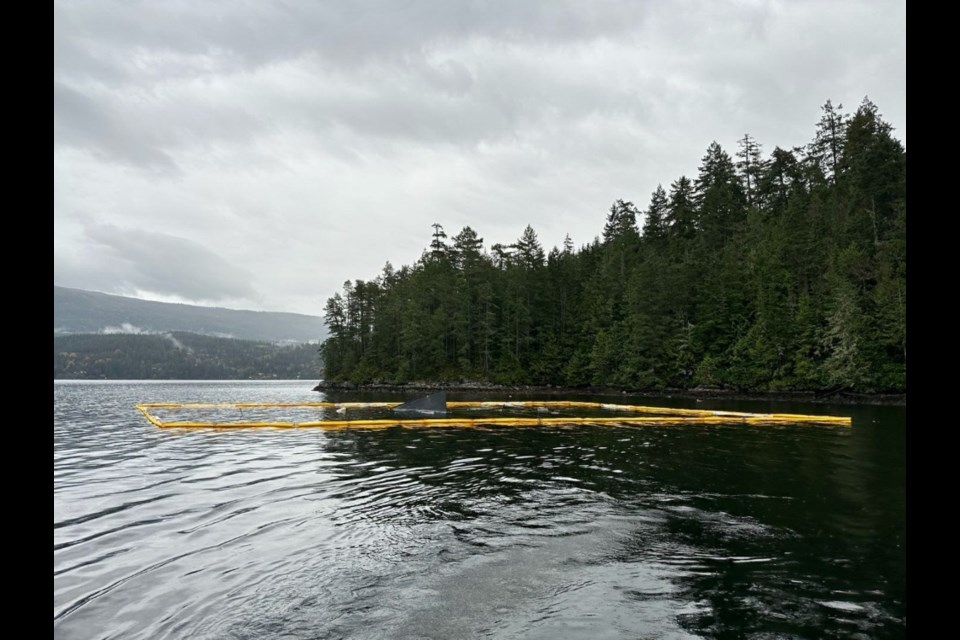Ever since the sank in Sechelt Inlet on Nov. 4, a containment area has been in place. Overflights have been conducted daily since Nov. 16 to make sure the containment is still effective.
While the craft’s fate is still uncertain, the vessel has been deemed a risk under the Wrecked, Abandoned or Hazardous Vessels Act (WAHVA). The vessel is resting on the ocean floor and remains stable in its current position, the Canadian Coast Guard said on Nov. 21. It is not considered a hazard to navigation.
“We ask the public to stay clear of this incident site while we, together with our partners, continue the assessment and response,” the Coast Guard said in a statement.
The Canadian Coast Guard is working with the vessel owner to ensure an appropriate response to minimize environmental impacts. The vessel owner has hired a local contractor to maintain a boom around the vessel, and that contractor has been tending to the 600 feet of containment boom deployed at the site daily and swapping sorbent boom as required, the Coast Guard said in the update. The contractor, Don MacKenzie of MacKenzie Sea Services, said there’s very minimal hydrocarbons coming from the vessel and the response is “going very good under the circumstances.”
The Coast Guard is also looking into the feasibility of hiring divers to conduct an underwater assessment of the vessel to assist with planning for next steps.
What caused the sinking has yet to be determined as response is under way. The Canadian Coast Guard is working with Environment and Climate Change Canada (ECCC), local First Nations, and the vessel owner on the response.
In 2019, the vessel was assessed by the Canadian Coast Guard and at the time was not determined to be a hazard under WAHVA, the Coast Guard told Coast Reporter.
According to the Transport Canada registration database, the R.J. Breadner (O.N. 314008) is no longer registered in Canada, and its status was “closed” on March 23, 2015.
Transport Canada confirmed the “closed” status means a vessel has been removed from the Canadian Register of Vessels. Reasons for deregistering a vessel include wanting to obtain a pleasure craft licence, the vessel has been sold to a foreign citizen or the vessel has been lost, wrecked or removed from service. “Transport Canada does not retain records of deregistered vessels past five years, in accordance with the provisions of the Privacy Act,” the email statement said.





